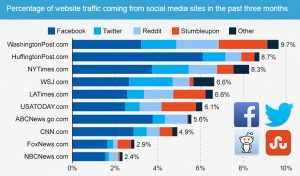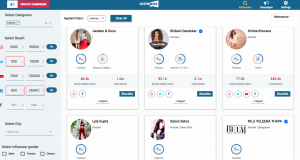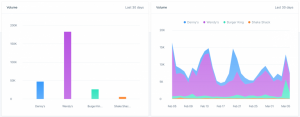What is the first thing that crosses your mind when you think about creating a music video? Or when you think about filming a short-film? I bet, it is this – Who is going to be your audience? For the longest time, the answer to this couldn’t be quantified. You had to rely on the creativeness of your art. However, today you have Big Data to your rescue.
The human brain processes images in as little as 13 milliseconds. In this multitasking, digital-first, skip-happy world, we have about 3 seconds to catch someone’s attention.
This is a graving question we often stumble upon after our art is ready, “Will the post be likable?” To make sure you get a resounding YES, 9 out of 10 times you rely on your creative genes that make your posts look attractive. Now creative content, you see, is slightly waggish because one can never assess who likes what. In this vibrant digital world, it’s easy for your art to get lost. The human brain processes images in as little as 13 milliseconds. In this multitasking, digital-first, skip-happy world, we have about three seconds to catch someone’s attention. Don’t lose hope just yet, because big data can, yes data can be your new creative director. In this post let’s explore how creative is evolving through data and how traditional creative can better incorporate data.
Marketing on social media always demands you to wear multiple caps, data analytics, however, should be the biggest. Relevant data is what one can resort to when your creative becomes mainstream. Ever since we attached real numbers to return on investments from marketing activities, the marketing landscape has switched sides. The shift to a tangible measurement of content consumption lead to the explosion of use of data is marketing. Suddenly, creativity started getting measured not just by hues and tones but also by a number of people who literally liked those hues. Data has given creative directors a different lens through which designing has become like tailoring, extremely personal.
Big Data is nothing but an assimilation of all the time a person spends on the internet.
Data is nothing but an assimilation of all the activities a person does on the internet. Sometimes, data can be overwhelming. In all the noise that big data makes, winning the game means understanding what data points are of utmost relevance for your business. How does one make music of the noise? To answer this question, let’s understand this – Every verticle in your business has different data points. For instance, data on website hits and bounce rates on your landing page might do wonders for your sales team but means nothing for HR. Facebook engagement by gender would mean the world to your digital marketing team but has nothing to do with let’s say operations. Our expertise lies in understanding data for marketing and sales so we’ll try to give you interesting insights for that.
How do you start a data-driven strategy for social media marketing?
Social media marketing has gone way beyond Spray and Pray. Marketing is no more only about posting funny GIFs with sassy hashtags and waiting for results. A stern data strategy can go a long way in positioning your brand digitally. So, where do you begin with? By setting goals that build your digital presence.
1. Increase Web Traffic
The most helpful metric here would be to check your traffic source. Find out which platform triggers people to come to your website. This can help you put in more effort on the sources that bring you maximum traction.

2. Improve Brand Reach Through Social Media
After you have doubled down on the sources that give you the most traffic, your job is to get more people to follow you on social media. Remember, social media acts as a catalyst for your brand’s digital performance. Your follower count is a great indicator of check how deep you are in the woods.
One of the ways to increase social media followers is to connect with social media influencers in your category and let them speak about your brand. Shortlisting the right kind of influencers is the key. Influencers can be discovered based on data points like age, gender, location, hashtags, category, reach, etc. You can use tools like Chtrbox that help you discover the right influencers. What matters most, is to increase your digital voice and subsequently grow your followers on social media.

3. Competitor Analysis
The last step in the process of digital recognition is to do a competitor analysis. You have to go all Sherlock and check how your competitors are generating traffic on their website. Tools like Mention, Alexa, SimilarWeb can help you easily assess your competition.

